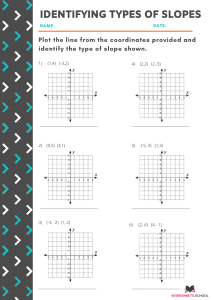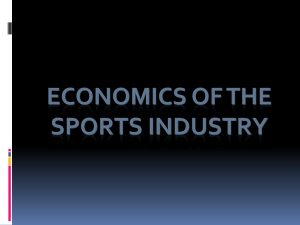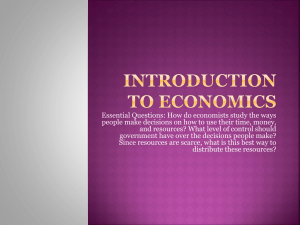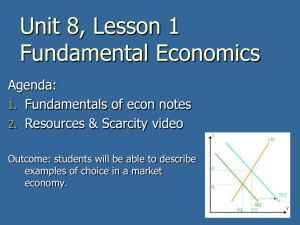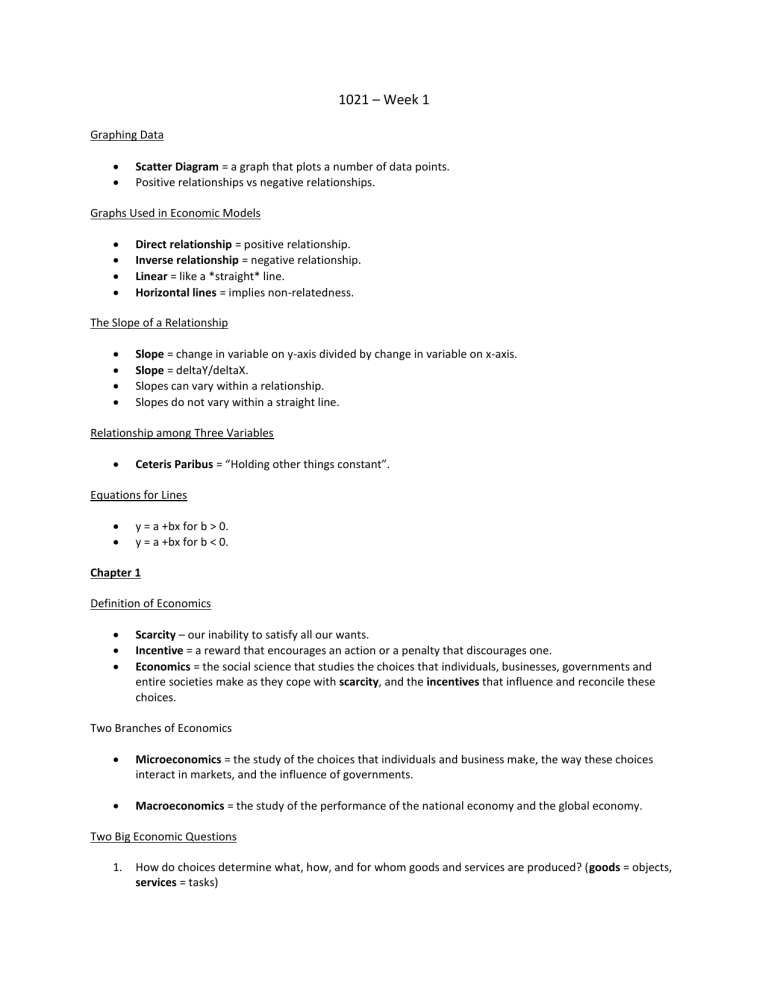
1021 – Week 1 Graphing Data Scatter Diagram = a graph that plots a number of data points. Positive relationships vs negative relationships. Graphs Used in Economic Models Direct relationship = positive relationship. Inverse relationship = negative relationship. Linear = like a *straight* line. Horizontal lines = implies non-relatedness. The Slope of a Relationship Slope = change in variable on y-axis divided by change in variable on x-axis. Slope = deltaY/deltaX. Slopes can vary within a relationship. Slopes do not vary within a straight line. Relationship among Three Variables Ceteris Paribus = “Holding other things constant”. Equations for Lines y = a +bx for b > 0. y = a +bx for b < 0. Chapter 1 Definition of Economics Scarcity – our inability to satisfy all our wants. Incentive = a reward that encourages an action or a penalty that discourages one. Economics = the social science that studies the choices that individuals, businesses, governments and entire societies make as they cope with scarcity, and the incentives that influence and reconcile these choices. Two Branches of Economics Microeconomics = the study of the choices that individuals and business make, the way these choices interact in markets, and the influence of governments. Macroeconomics = the study of the performance of the national economy and the global economy. Two Big Economic Questions 1. How do choices determine what, how, and for whom goods and services are produced? (goods = objects, services = tasks) Factors of production = resources used to produce goods and services. 1. Land = natural resources (gets rent). 2. Labour = human resource that actually produces (gets wages). 3. Capital = physical tools and buildings (gets interest) 4. Entrepreneurship = human resource that organizes (gets profits). Social Interest 2. Do choices made in pursuit of self-interest also promote the social interest? a. Efficiency = it is not possible to make someone better off without making someone else worse off. b. Fairness. Real Issues Concerning Social Interest 1. 2. 3. 4. Globalization. Information-age monopolies. Climate change. Economic instability. The Economic Way of Thinking Trade off = choosing one option and thereby giving up the option’s alternatives. Rational choice = choosing the option with the greatest benefit (over cost). Preferences = what a person likes or dislikes and the intensity of those feelings. Benefit = value of something as determined by preferences. Opportunity cost of an option = the benefit of the option’s best alternative. Choosing at the Margin Marginal benefit = additional benefit from an increase in an activity. Marginal cost = the cost of an increase in activity (foregone benefit of having a little less of best alternative). Economics as Social Science and Policy Tool Normative statement = statement about what should be. Positive statement = statement about what is. Economic model = a (positive) description of some aspect of the economic world that includes only needed features. Incentives and Policy Choices are affected by incentives (part of “The Economic Way of Thinking”) Economists hope to suggest government policies that create incentives in such a way that self-interest promotes the social interest. Economists in the Economy Skills Needed for Economic Jobs 1. Critical thinking. 2. 3. 4. 5. (Economic) analysis. Mathematics. Written communication. Oral communication.
